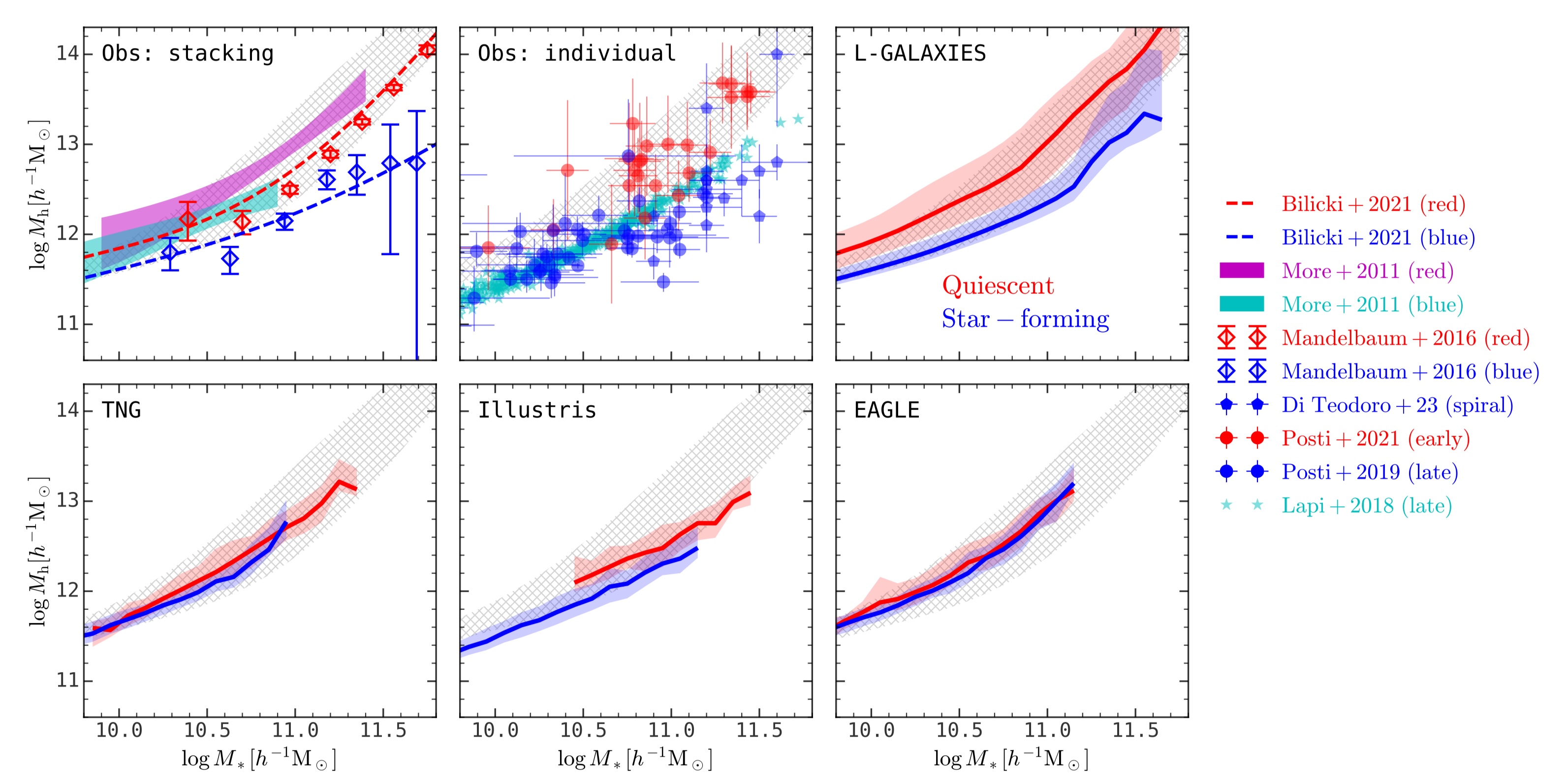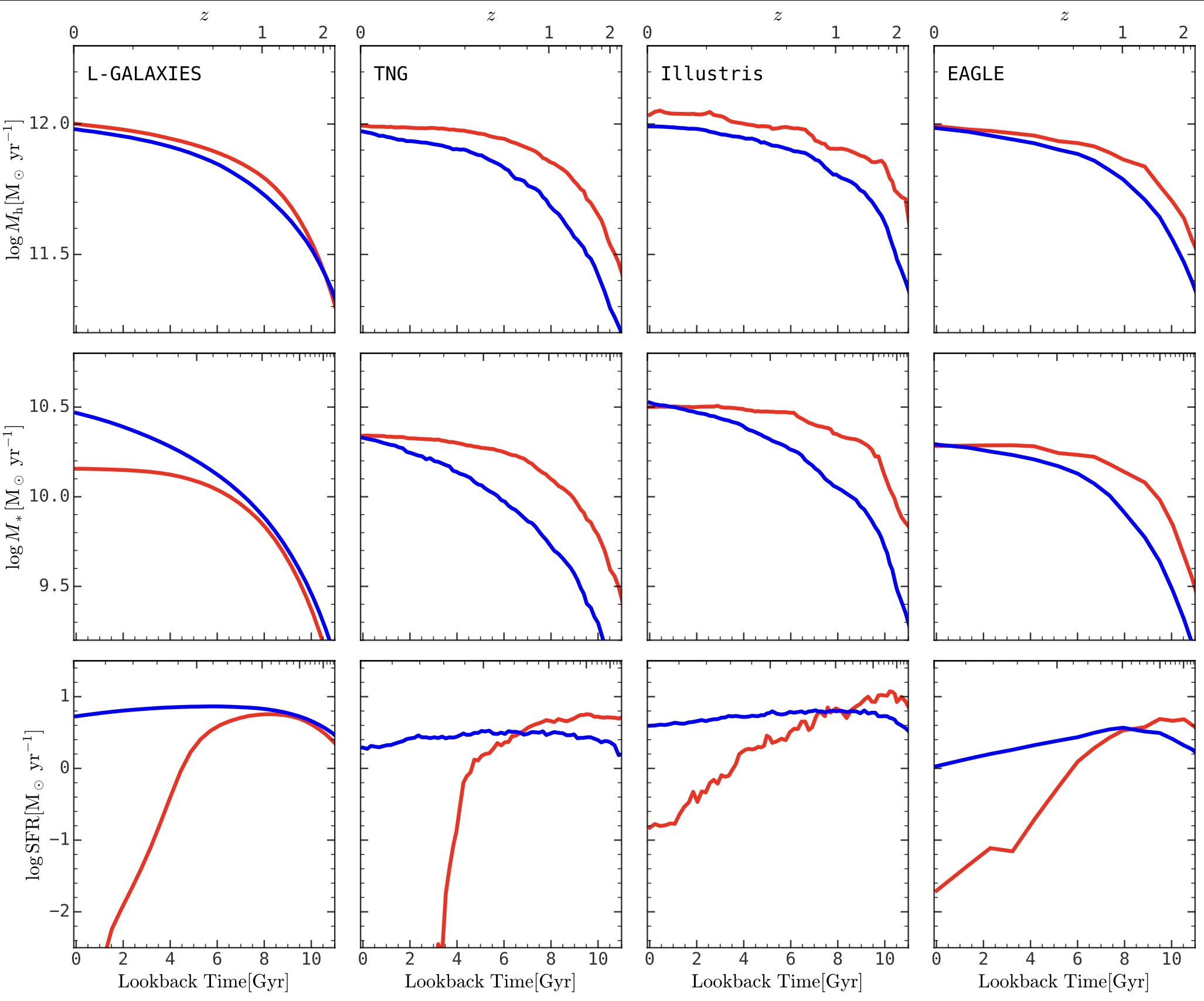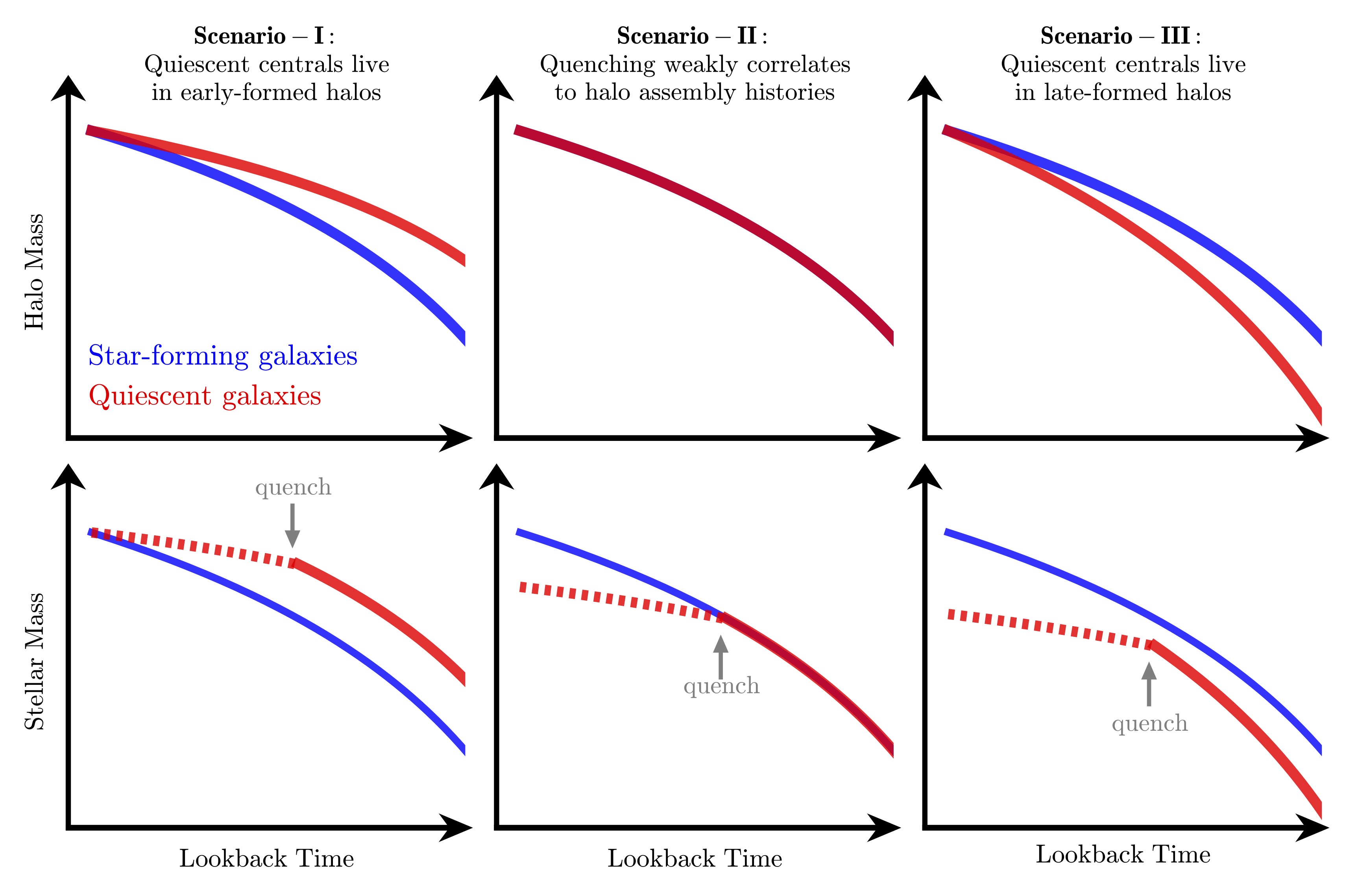The stellar mass-halo mass relation for star-forming and quiescent galaxies
Aug. 17, 2024
The stellar mass-halo mass relation of galaxies is deemed one of the most fundamental scaling relations in galaxy formation and evolution. Subsequent studies found convergent evidence that SHMR profoundly depends on the star formation status of central galaxies. What is the scientific implication of this result? What can we learn from it?
This blog is based on arXiv:2408.07743.
The SHMR for the general population
The picture of galaxy formation within dark matter halos suggests strong relationships between galaxies and their host dark matter halos, and the stellar mass-halo mass relation (SHMR) is the most fundamental relation to connect galaxies and dark matter halos. We have seen that SHMR conveys at least three important messages about galaxy formation (see this blog):
- The stellar mass-to-halo mass ratio is generally low when compared with the universal baryonic fraction, which says that galaxies are not good at converting baryons into stars.
- The stellar mass-to-halo mass ratio is lower in low-mass halos, which requires at least one additional mechanism to suppress the stellar conversion efficiency.
- The stellar mass-to-halo mass ratio is lower in high-mass halos, which also requires at least one additional mechanism to suppress the efficiency here.
These results not only put stringent constraints on galaxy formation models, but also elicit numerous efforts on the feedback effects from stellar feedback and AGN feedback.
The SHMR for star-forming and quiescent galaxies
Convergent observational evidence from independent studies has shown that, at a fixed stellar mass, quiescent central galaxies prefer to live in more massive halos than their star-forming counterparts. Moreover, measurements of individual systems further confirm that, at a fixed halo mass, star-forming galaxies have higher stellar mass than quiescent galaxies. In other words,
Either binned in stellar mass or halo mass, star-forming galaxies can convert available baryons into stars more efficiently than quiescent galaxies.
When compared with state-of-the-art galaxy formation models, including one semi-analytical model (L-GALAXIES) and three hydrodynamical simulations (TNG, Illustris, EAGLE), we found that only the semi-analytical galaxy formation model could reproduce the observational result while the other three hydrodynamical simulations failed.

The evolution history of galaxies and their host halos
To figure out the secret of L-GALAXIES's success and all other three simulations' failure, we further analyze the evolution history of galaxies and their host halos. As one can see from the following figure, the average halo growth histories are similar to each other for star-forming and quiescent galaxies in L-GALAXIES, while, in all three hydrodynamical simulations, quiescent galaxies prefer to live in early-formed halos. As a consequence, L-GALAXIES can differentiate the efficiency of converting baryons into stars for star-forming and quiescent galaxies, while galaxies in all three hydrodynamical simulations end up with similar stellar mass and halo mass, regardless of their star formation status.

Illustration
We realize that the key difference between L-GALAXIES and the other three hydrodynamical simulations is how galaxy quenching is related to the assembly history of dark matter halos. In L-GALAXIES, the halo assembly histories of star-forming and quiescent galaxies are very similar to each other, which, in other words, says that the quenching of central galaxies only weakly correlates to the halo assembly history (Scenario-II). On the contrary, all other three hydrodynamical simulations predicts that quiescent galaxies profoundly prefer early-formed halos (Scenario-I). Finally, for the sake of completeness, we also consider the case that star-forming galaxies prefer early-formed halos (Scenario-III).
The prediction of stellar mass and halo mass evolution is shown in the following illustrative figure. In all three scenarios, all galaxies are star-forming at the initial stage, so their stellar mass growth is proportional to the growth of dark matter halos, thus the total available baryons, which is a reasonable assumption. Then, some galaxies are quenched, their stellar mass growth will be suppressed, compared to their star-forming counterparts.
In Scenario-I, the progenitors of quiescent galaxies were more massive when they are still star-forming, since these progenitors live in more massive halos. Then, when these galaxies were quenched and got suppressed in terms of their stellar mass growth, which allows their star-forming counterparts to catch up. Eventually, these two populations end up with similar stellar mass, which is disfavored by observational data.
In Scenario-II, since star-forming and quiescent galaxies have similar halo assembly histories, they have similar stellar mass initially. Then, along with the quenching of some galaxies, their stellar mass growth is suppressed and end up with lower stellar mass, compared to their star-forming counterparts.
In Scenario-III, the stellar mass of those quiescent galaxies is not only suppressed by late-time quenching, but also disadvantaged initially since their progenitor halo mass is lower. Consequently, those quiescent galaxies end up with lower stellar mass than their star-forming counterparts, and the difference is even larger than Scenario-II.
In summary, the qualitative observational results strongly disfavor Scenario-I, while furhter discrimination between Scenario-II and Scenario-III requires more quantitative results.
